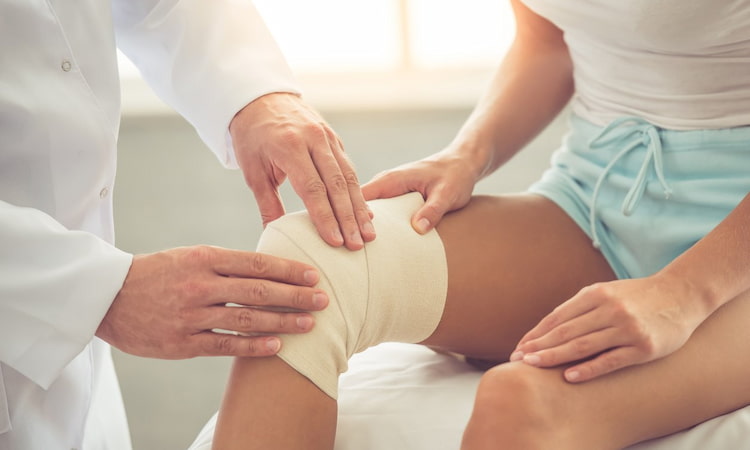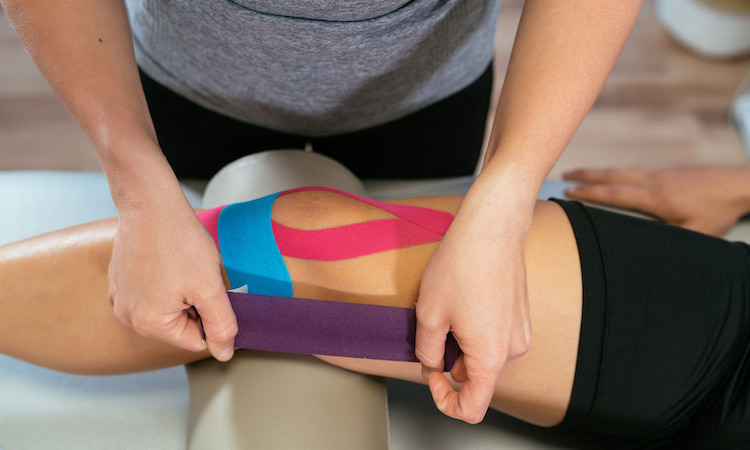You’ve injured your knee and you’re considering a hot tub soak for relief. But hold on, could it cause more harm than good?
Using a hot tub after a knee injury might not be recommended because heat can increase inflammation and swelling, which could potentially prolong recovery. While heat can relax muscles and alleviate pain, it does so by increasing blood flow, which can worsen any existing swelling in the injured area.
Therefore, it’s generally advised to avoid heat applications like hot tubs immediately after a knee injury and stick to cold treatments instead.
We’ll delve into the science of heat and inflammation, weigh the potential risks, and explore alternative therapies. Let’s ensure your path to recovery is safe and effective.

Quick Navigation
Understanding the Nature of Knee Injuries
You’ve got to understand the nature of a knee injury before you can fully comprehend why it’s not recommended to use a hot tub afterward. When you injure your knee, your body immediately starts working to protect and heal the area. It does this through inflammation, a process that involves swelling, heat, and often pain. This natural defense mechanism is vital for healing, but it can also cause discomfort.
Now, imagine you decide to soak in a hot tub, thinking it will soothe your aching knee. What you’re actually doing is introducing excessive heat to an area that’s already inflamed. This can lead to increased swelling and pain, possibly hindering your body’s healing process.
Furthermore, the pressure from the water can put additional strain on your injured knee, potentially causing further damage. Even if it feels good at the moment, the aftermath could be detrimental to your recovery.
The Science Behind Heat and Inflammation
During the initial phase of inflammation after a knee injury, you’re likely to experience heat and swelling, but do you know why that’s happening? It’s because your body’s immune system springs into action, increasing blood flow to the injured area. This process, called vasodilation, brings more white blood cells to fight off potential infections.
Additionally, heat stimulates your body’s pain receptors, alerting you to the injury. While it may be uncomfortable, it’s a crucial part of the healing process. However, applying more heat to an already inflamed knee might overstimulate these receptors, leading to increased discomfort and delayed healing.
| Body’s Reaction | Emotional Response |
|---|---|
| Increased blood flow | Relief, knowing your body’s fighting for you |
| Heat and swelling | Concern, due to discomfort |
| Pain receptors’ stimulation | Alarm, urging you to protect the knee |
| Prolonged heat application | Anxiety, due to increased pain and slow recovery |
Listen to your body’s signals. It’s trying to tell you how to care for your knee. Remember, it’s best to avoid hot tubs during the initial phase of inflammation, to help your body heal properly and faster.
Potential Risks of Hot Tubs for Injured Knees
While you might crave the soothing warmth of a hot tub for your injured knee, it’s essential to understand the potential risks this could impose on your recovery process. Ease into this knowledge like you would a hot tub, carefully and with understanding.
- Increased Swelling: High temperatures can cause blood vessels to expand, potentially leading to increased swelling. This isn’t what you want for an injured knee. Instead, reducing inflammation should be your aim.
- Delayed Healing: Soaking in hot water could delay the healing process. Heat may feel good but it doesn’t necessarily promote recovery. You might find yourself stuck in a cycle of temporary relief followed by increased discomfort.
- Risk of Further Injury: The heat can make you feel more flexible than you actually are. This false sense of flexibility might encourage you to move in ways that aren’t yet safe for your injured knee, risking further damage.
Alternative Therapies for Knee Injury Recovery

After ruling out hot tubs as a recovery aid for your knee injury, you might be wondering about other possible treatments, and there’s a whole range of alternative therapies to consider. Physical therapy is often the first step, providing targeted exercises to strengthen your knee and improve flexibility, all under the watchful eye of a trained professional.
You might also consider acupuncture, a traditional Chinese medicine technique that’s gained recognition worldwide for its effectiveness in pain management. It’s believed to stimulate the body’s natural healing processes, making it a potential aid in knee injury recovery.
Another option is gentle yoga, which can help improve strength and flexibility. However, you must ensure you’re performing the movements correctly to avoid additional injury. You should consult with a yoga instructor experienced in dealing with injuries.
Lastly, consider massage therapy. It helps reduce swelling and inflammation, enhances circulation, and can be particularly effective when combined with other treatments like physical therapy.
Case Studies: The Impact of Hot Tub Use on Knee Injuries
You’ll find a number of case studies out there, but let’s focus on a few that specifically address the impact of hot tub use on knee injuries.
- The University of Colorado Study: Researchers found that hot tub therapy can provide temporary relief for some knee injuries. However, it’s not recommended for acute or severe injuries, as it may increase inflammation and prolong recovery.
- The Mayo Clinic Investigation: Experts here concluded that while hot tubs can help ease stiff joints, they aren’t a cure-all. Prolonged heat can actually exacerbate certain knee conditions, such as osteoarthritis.
- The Johns Hopkins University Research: This study revealed that hot tub usage can lead to improved circulation, aiding in pain reduction and muscle relaxation. Yet, it’s crucial to remember that heat therapy should always be used in moderation and never as a sole treatment method.
In essence, hot tub use after a knee injury can be beneficial, but it’s not a one-size-fits-all solution. Always consult with a healthcare professional before beginning any new treatment regimen. Understanding your injury, listening to your body, and adhering to professional advice will always be the safest way to a successful recovery.
Frequently Asked Questions
You shouldn’t ignore severe swelling, inability to move your knee, noticeable deformity, inability to walk comfortably, and persistent pain. These symptoms could signal a more serious injury needing immediate medical attention.
Your knee injury’s recovery time varies, typically taking between 2-12 weeks. It’s contingent on your injury’s severity, your overall health, and how diligently you follow physical therapy and other recommended treatments. Always prioritize safety and patience.
You can strengthen your knee post-injury with low-impact activities. Try gentle exercises like cycling, swimming, or using an elliptical machine. Always consult your physiotherapist before starting any new exercise regime to ensure it’s safe for you.
Absolutely, dietary changes can aid in knee recovery. You’ll want to focus on foods rich in vitamins C, D, calcium, and protein. They’re vital for bone health, wound healing, and muscle regeneration, respectively.
If you don’t properly treat a serious knee injury, you’ll risk long-term effects such as chronic pain, instability, decreased range of motion, and arthritis. In worst cases, it could lead to permanent disability.
Conclusion
While hot tubs can seem tempting for a knee injury, it’s not the safest choice. Heat can amplify inflammation, leading to further damage. The risk of accidents, like slips, increases too. Instead, consider safer alternatives like cold compresses or physical therapy.
Remember, each case is unique and what worked for others may not work for you. Always consult a healthcare professional before starting any new treatment. Your safety and speedy recovery should always be the priority.

![Is Hot Tub Good for Cold? [Potential Risks & Precautions] Is Hot Tub Good for Cold](https://hottubtales.com/wp-content/uploads/2023/10/Is-Hot-Tub-Good-for-Cold.jpg)




